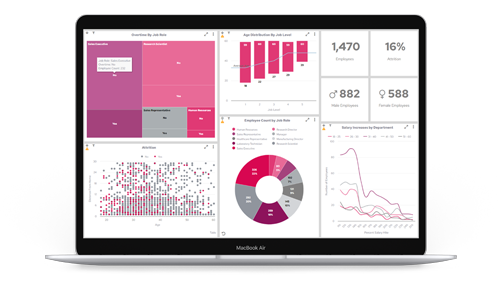With over 5.4k* Fintech SaaS companies operating globally, competition has never been more fierce. And with increased consolidation, it’s never been more dynamic too. The consolidation and competitive surge in the Fintech SaaS space likely began on the B2C front, with the emergence of all-encompassing Fintech apps for everyday customers.
But what about the B2B Fintech sector? Here too, the trend mirrors B2C, with B2B Fintech SaaS providers striving to scale comprehensive, all-in-one platforms. This has sparked a race for dominance, pushing smaller Fintechs towards consolidation to enhance their offerings and avoid obsolescence.
To understand more, in our latest series, we’re delving into the driving forces behind the intense competition, challenges for industry leaders and newcomers, the future of disruptive innovations—and what's necessary to thrive in a market that demands comprehensive solutions.
We also share extensive industry insight from Fintech’s in the trenches—like Starling Bank, FINBOURNE, incuto, Lenvi, Mutual Vision, OnePay, techUK, and Tred.
Let’s dive in!
Remaining relevant in the Fintech SaaS competitor landscape
There’s immense pressure in the Fintech SaaS space to rapidly roll out new and monetized products. That’s why companies are constantly launching new offerings, trying to keep up with trends and boost revenue. But this rapid-fire approach isn't without risks. Relying too much on the idea that more products mean more success can backfire—not everything hits the mark.
Fintech SaaS providers face the danger of ‘putting all their eggs in one basket.’
Ultimately, diversity of capabilities dilutes this risk and provides more optionality.
Think about it. Customers now expect SaaS solutions to be comprehensive and feature-packed with integrated services right out of the gate. Missing the mark on this can lead to customer churn as they look elsewhere for all-in-one solutions.
So, it raises the question: Are Fintechs feeling the pressure, or is there a sense of opportunity amidst the challenges?
Fintech SaaS competition: Competitive or opportunistic?
Surprisingly, the answer tends towards optimism rather than distress. When we recently interviewed industry experts, it was clear that there's palpable excitement about expert new entrants targeting specific niches.
Businesses like incuto and FINBOURNE, are doing just that. For example, incuto is focusing squarely on improving access to affordable credit. According to incuto's Andrew Rabbit, the competitive advantage comes from being the first to do the hard work of building a platform that customers need.
Newer niche players still face incredibly high barriers to entry, though. As FINBOURNE and OnePay shared, it's simply too difficult for newcomers to replicate and displace entrenched solutions in most subsectors.
However, the appeal of nipping at incumbents’ heels will continue to drive a stream of disruptors and innovators. Fintech SaaS providers must brace themselves for fresh competitors every 12-18 months.
Richard adds; “Because our propositions are quite broad, we’ll see other organizations entering who provide certain components and functionality that overlap with ours. So, there is quite a bit of competition and a lot of innovation within the existing competitor base.”
But it’s not just about targeting specific niches or innovation—the true test arrives in scaling.
Adapting solutions (and organizations) to meet multiple clients’ needs is far harder than supporting just one early adopter. Growing pains abound, and most strugglers fail to make the leap from startup to scaleup.
The bottom line? While concentration risk leads to some expansion across verticals, most remain focused squarely on their core competencies. Specialization trumps generalization…for now at least.
Has the time to disrupt passed?
Pioneers, disruptors, challenger banks—they've all had their moments, shining briefly or making a lasting impact in the fintech world. But the trend now shifts towards consolidation.
In 2023 alone, there were 49 Fintech SaaS acquisitions, a significant increase from 75 in 2022.
Marketmap: Fintech SaaS

(2021 to 2030 global Fintech revenue growth by region. Source: BCG, 2023)
This means, even if you have a top-notch product, you're competing with well-established giants who are diversifying through R&D, acquisitions, collaborations, and more.
So, it's not just about keeping customers; scaling your services as your client base grows is equally crucial. Whilst the window for disruption shrinks annually, glimmers remain for creating offerings that solve urgent problems for underserved segments.
Securing growth against Fintech SaaS competition
In some cases, going niche is the way to stand out. It's all about zeroing in on what's missing in the market. Just like FINBOURNE evolved because customers are after something that ‘does it all’. Providers need to beef up their offerings to stay in the game.
Modernizing old systems, like moving to the cloud and adding AI, is a big opportunity.
Hybrid and parallel deployment models allow the blending of old and new.
The smartest SaaS businesses offer more than software; they get into the nitty-gritty of workflows and data. If you embed your services deep enough, you become a key part of how business is done—and that's a winning strategy.
Data is driving action. It’s upending power structures that have existed for years. And as data becomes more accessible, we will see more undeniable and immediate shifts in power happening across the industry.
A quick word on competitive pessimism
The buzz around customer-centricity often feels more like lofty rhetoric than reality. Industry insiders, such as Mike Fisher, have pointed out that many solutions prioritize vendor profits over actual user needs, leading to an accumulation of superficial features while deeper problems remain unaddressed.
This disconnect is evident in the lack of tailored solutions for niche markets, particularly in areas like financial inclusion. Mainstream providers typically overlook the underbanked and underserved, focusing instead on more profitable market segments.
Melanie Wilkinson from OnePay emphasizes their commitment to serving financially excluded customers, noting that their entire product development process revolves around addressing the specific challenges faced by this group. This trend of prioritizing financial return over social impact is visible across various sectors of fintech, from banking to blockchain. Companies often aim to capture larger, more lucrative markets, consequently neglecting the needs of smaller, less profitable segments.

Collaboration: The new era of Fintech SaaS competition?
In the Fintech SaaS sector, collaboration is overtaking competition, especially with the looming battle between financial services and Big Tech. For example, banks are partnering with fintech firms they previously viewed as threats, choosing cooperation over competition. It's a smart move seen by the UK's leading neobanks.
They prefer selling technology to traditional banks rather than expanding globally. This shift towards collaborative innovation is echoed by techUK's Andy Thornley, emphasizing the fleeting nature of technological leadership.
Ultimately, they're not just making allies; they're turning their old rivals into customers. This shift is all about staying strong against the Big Tech wave and shows a real change in how the finance world is playing the game.
The key to growth in the Fintech SaaS competitor landscape
Data holds the key to competitive advantage. It is THE most essential thing to driving innovation and standing out. There are three key components to successfully leveraging data analytics today.
Data visualization
Data Visualization in Fintech is all about making complex data easy to understand. It's not just showing numbers; it's about creating a story that speaks to the user, making complex information understandable at a glance. Good data visualization is a great visual aid that’s really useful in helping people take raw data and turn it into easy-to-spot trends and patterns so they can make smart decisions fast.
For Fintech SaaS companies, getting this right means creating dashboards and tools that turn all that complicated data into useful insights – without you needing to be a data scientist – making the whole user experience better and their products really valuable.
User-friendly analytics
Consumers are using digital financial apps to move money, buy coffee, and even split bills with friends and your customers want access to this abundance of data visually. According to EY, 64% of the global population used at least one Fintech app in 2019, which demonstrates the potential for data insight. But whatever the application may be, there is a clear correlation between those that are successful - and it is those that are accessible and designed with users in mind.
A user-friendly interface that simplifies complex financial data is crucial. Digital financial applications that offer a seamless, intuitive user experience will stand out. This means using easy-to-use platforms for analyzing data, so anyone can understand it, tech-savvy or not. The aim is to design simple but effective interfaces, making it a breeze for users to get what they need from financial data. This approach not only retains existing users but also attracts new ones, broadening the user base.
Maintaining data security
With the introduction of Open Banking, data security becomes more critical than ever. Ensuring the security of financial data is not just a compliance issue but a cornerstone of customer trust. In an era where data breaches are increasingly common, Fintech SaaS providers must invest in robust security protocols.
This means encryption, secure data storage, and regular security audits to ensure that user data is protected at all times. What’s more, educating users about data security and incorporating user-friendly security features can further enhance trust and loyalty.
The bottom line: A Fintech SaaS company's growth depends a lot on how well it uses data analytics. If they're really good at making data easy to understand, creating user-friendly tools, and keeping data safe, they can stand out from others. This leads to happier customers and helps the company become a top competitor.
Now it’s your turn to take action
To set your Fintech SaaS up for success, you’ll have to face these shifts head-on and adopt a new playbook for staying ahead. The actions you take today will dictate the future of your business for the next 10 years or more.
We’ve covered quite a lot of ground in this blog so here are the key points:
- Big companies are merging to create all-in-one services, but there's still room for smaller companies to make a mark in niche areas. The key is to integrate deeply into customer workflows and stand out.
- Innovation is shifting towards creating real value, not just new ideas. Those embedding deeply within workflows to solve root problems become essential.
- Looking ahead, partnerships are becoming more important as teamwork starts to outweigh competition.
- Fast movers will lead the way, and those who can't keep up might get left behind. It's all about using data smartly, forming partnerships, and standing out in the crowd.
So where does this leave us? Your strategy for using data might be the strongest competitive differentiator you have. It’s the key to building great products, delivering excellent customer experiences on the frontlines, and keeping your investors engaged.
Fast movers will lead the way, and those who can't keep up might get left behind. It's all about building quickly, forming smart partnerships, and standing out in the crowd.






















